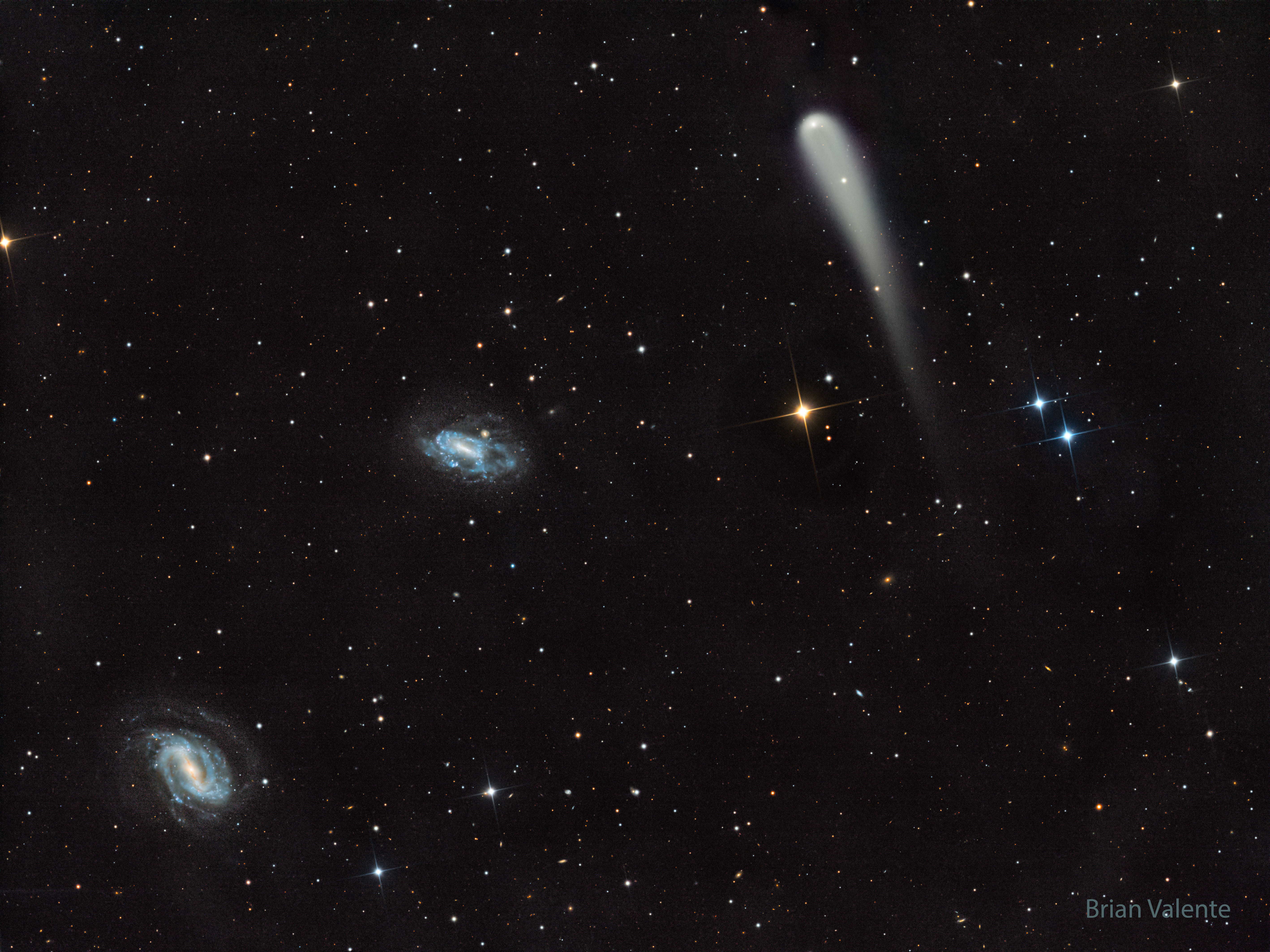
Posted on 09/23/2024 12:04:46 PM PDT by MtnClimber
Explanation: What will happen as this already bright comet approaches? Optimistic predictions have Comet C/2023 A3 (Tsuchinshan–ATLAS) briefly becoming easily visible to the unaided eye -- although the future brightness of comets are notoriously hard to predict, and this comet may even break up in warming sunlight. What is certain is that the comet is now unexpectedly bright and is on track to pass its closest to the Sun (0.39 AU) later this week and closest to the Earth (0.47 AU) early next month. The featured image was taken in late May as Comet Tsuchinshan–ATLAS, discovered only last year, passed nearly in front of two distant galaxies. The comet can now be found with binoculars in the early morning sky rising just before the Sun, while over the next few weeks it will brighten as it moves to the early evening sky.
For more detail go to the link and click on the image for a high definition image. You can then move the magnifying glass cursor then click to zoom in and click again to zoom out. When zoomed in you can scan by moving the side bars on the bottom and right side of the image.

🪐 🌟 🌌 🍔

Tuckinastan!
“For more detail go to the link and click on the image for a high definition image. “
Is there any indication of the angular scale of the image?
Something that would allow us to know, say, approximately how long the comet is in degrees.
Wow.

"Wheeeeee!"
“If you go to this website: C/2023 A3 (Tsuchinshan-ATLAS) 2024-05-29 and hover “
Thanks, but I can’t decipher the gridline positions. Other articles say it will be viewable with the naked eye or better with 7x50 binoculars.
Disclaimer: Opinions posted on Free Republic are those of the individual posters and do not necessarily represent the opinion of Free Republic or its management. All materials posted herein are protected by copyright law and the exemption for fair use of copyrighted works.